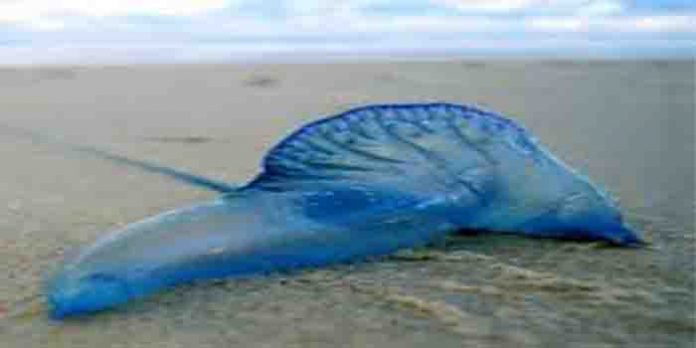Sydney’s beaches experienced an influx of bluebottles over the weekend as ideal summer conditions and favourable winds pushed the zooids in to shore. Swimmers across most of the east’s iconic beaches reported seeing the stingers – affectionately dubbed “Blueys” – in plague proportions across Bondi, Maroubra, Bronte and Tamarama.
Typically bluebottles are blown in to Sydney and east-facing beaches in summer, as the “float” part of the bottle catches a north-east wind. On Saturday all of the city’s beaches endured a strong nor-north east wind that peaked at around 40 km/h in the afternoon. While many describe bluebottles as jellyfish, they are more technically referred to as siphonophores and are made up of several individuals known as a “colony”. The “float”, or blue inflated bag you see on the surface, helps carry bluebottles through the water like a sailboat on the wind. Beneath it is a series of tentacles that “fish” for plankton and crustaceans in the water. The Australian Museum notes that up to 30,000 stings are reported each year from Australia’s east coast. No fatalities have been confirmed from the common bluebottle in the Southern Hemisphere.
Bluebottle stings can result in intense pain in the areas of skin which have been in contact with the jellyfish tentacles, but the pain usually subsides after one to two hours. While there are a number of infamous urban myths about how to treat a bluebottle sting – such as urinating on the injury – most research points towards heat treatment as the most effective solution.






















